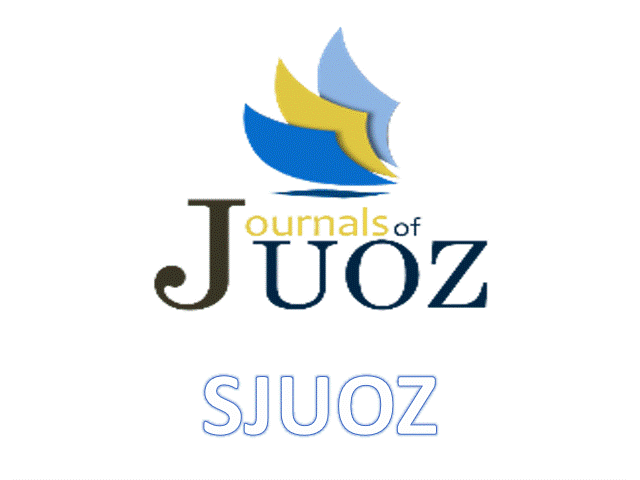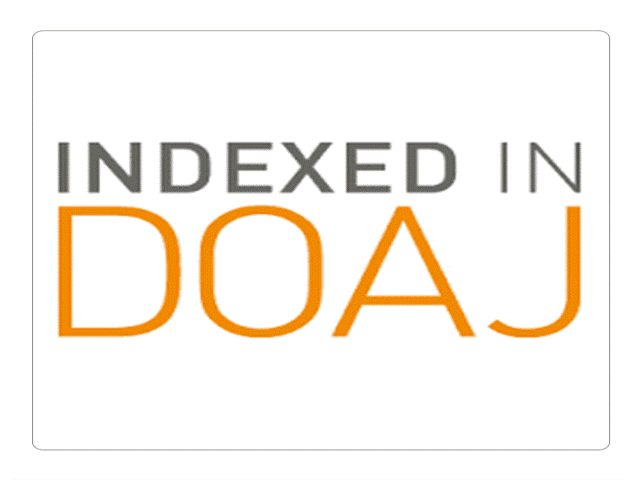IRRIGATION WATER QUALITY ASSESSMENT USING CROSS IN DUHOK GOVERNORATE, KURDISTAN REGION OF IRAQ
DOI:
https://doi.org/10.25271/sjuoz.2025.13.4.1565Keywords:
Sodium Adsorption Ratio, Cation Ratio of Structural Stability, irrigation water quality, adjusted Ca, Heavy metals, wastewater, Phytoremediation, Duhok valleyAbstract
This study was conducted in the Duhok Governorate, Kurdistan Region of Iraq. A total of eleven natural water samples were collected from different water sources, including Rivers, lakes, wells, and drainage canals. All samples were analyzed in triplicate to ensure accuracy and reproducibility. Electrical Conductivity (EC), pH, Bicarbonate (HCO₃⁻), major Cations: Calcium (Ca²⁺), magnesium (Mg²⁺), Sodium (Na⁺), and Potassium (K⁺) were determined.
Sodium (Na) levels ranged from 0.075 to 34.883 mmolc L⁻¹, with Kashi exhibiting the highest concentration, while the lowest one was registered in the Khabur River 0.075 mmolc L⁻¹). Potassium (K) concentration was generally low across all samples, with a mean of 3.253 mmol/L. Khabur River had the lowest across all samples (0.055 mmolc L⁻¹). The highest was in Hishkarow (0.63 mmolc L⁻¹). Calcium levels vary widely from 1.05 to 5.4 mmolc L⁻¹, with Bedol River showing the highest Ca concentration. Magnesium levels were higher than Ca in some samples. Qasara well 2 had the highest magnesium (Mg) concentration (6.00 mmolc L⁻¹), while the lowest was determined in Bedol River (0.6 mmolc L⁻¹). The adjusted Ca concentrations ranged from 0.907 to 3.548 mmolc L⁻¹, with the highest value in Duhok Dam. Highest Kashi EC (4.290 dS. m⁻¹) indicates very high salinity, which may affect water usability for irrigation, in contrast to the lowest in Bedol River (0.406 dS. m⁻¹), which suggests good water quality with low dissolved salts. Sodium Adsorption Ratio (SAR) was the highest for Kashi (17.082), indicating a high risk of soil dispersion if used for irrigation; however, the lowest was (0.056) for Khabur River, suggesting no salinity hazard. CROSS values ranged from 0.091 to 18.368, and CROSS (using adj. Ca) ranged from 0.103 (Khabure River) to 24.341 in (Kashi).
The results highlighted variation in all parameters, influencing the suitability of these water sources for irrigation. The best water source for agriculture is the Khabur River, which has the lowest Na, EC, and SAR values, making it the best choice. The worst water source is Kashi, which has extremely high sodium, EC, and SAR values, making it unsuitable for irrigation. Municipal and Dam water, generally moderate in all parameters, making them safer for multiple uses. In contrast, well water varies but tends to have higher magnesium levels
Downloads
References
Aparicio del Moral, J. O., Tenza Abril, A., Borg, M., Galea, J., & Candela Lledó, L. (2019). Agricultural irrigation of vine crops from desalinated and brackish groundwater under an economic perspective: a case study in Siggiewi, Malta. Science of the total environment, 650(Part 1), 734-740. DOI: org/10.1016/j.scitotenv.2018.09.059
APHA (2005). Standard Methods for the Examination of Water and Wastewater, 21th ed. Washington DC: American Public Health Association.
Arienzo, M., Christen, E. W., Jayawardane, N. S., & Quayle, W. C. (2012). The relative effects of sodium and potassium on soil hydraulic conductivity and implications for winery wastewater management. Geoderma, 173, 303-310. DOI:org/10.1016/j.geoderma.2011.12.012
Ayers, R. S., & Westcot, D. W. (1985). Water quality for agriculture (Vol. 29, p. 174). Rome: Food and agriculture organization of the United Nations.
Bano, I and Arshad, M., (2018). Climatic changes impact on water availability. In Perspectives on water usage for biofuels production: aquatic contamination and climate change (pp. 39-54). Cham: Springer International Publishing.
Beutler, M., Wiltshire, K. H., Meyer, B., Moldaenke, C., Luring, C., Meyerhofer, M., & Hansen, U. P. (2014). APHA (2005), Standard Methods for the Examination of Water and Wastewater, Washington DC: American Public Health Association. Ahmad, SR, and DM Reynolds (1999), Monitoring of water quality using fluorescence technique: Prospect of on-line process control. Dissolved Oxyg. Dyn. Model. Case Study A Subtrop. Shallow Lake, 217, 95.
Bouksila, F., Bahri, A., Berndtsson, R., Persson, M., Rozema, J., & Van der Zee, S. E. (2013). Assessment of soil salinization risks under irrigation with brackish water in semiarid Tunisia. Environmental and experimental botany, 92,176-185.DOI: org/10.1016/j.envexpbot.2012.06.002
Broeke, H. T., Mirjam, J. D., Kroes, J. G., Bartholomeus, R. P., van Dam, J. C., de Wit, A. J., ... & Ruijtenberg, R. (2016). Quantification of the impact of hydrology on agricultural production as a result of too dry, too wet or too saline conditions. Soil, 2(3), 391-402.DOI: org/10.5194/soil-2-391-2016, 2016.
Buelow, M. C., Steenwerth, K., & Parikh, S. J. (2015). The effect of mineral-ion interactions on soil hydraulic conductivity. Agricultural Water Management, 152, 277-285.DOI: org/10.1016/j.agwat.2015.01.015
Estefan, G., Sommer, R., & Ryan, J. (2013). Methods of soil, plant, and water analysis: a manual for the West Asia and North Africa region.
Halliwell, D. J., Barlow, K. M., & Nash, D. M. (2001). A review of the effects of wastewater sodium on soil physical properties and their implications for irrigation systems. Soil Research, 39(6),1259-1267.DOI: org/10.1071/SR00047
Hutson, A. C., & Ickert, R. A. (2012). Sustainability in water supply. In World Environmental and Water Resources Congress 2012: Crossing Boundaries (2856-2872).
Jackson, M. (1958). Soil chemical analysis prentice Hall. Inc., Englewood Cliffs, NJ, 498(1958), 183-204.
Kruger, I., Taylor, G., & Ferrier, M. (1995). Australian pig housing series: effluent at work. NSW Agriculture: Tamworth.
Lesch, S. M., & Suarez, D. L. (2009). A short note on calculating the adjusted SAR index. Transactions of the ASABE, 52(2), 493-496.
Marchuk, A., Marchuk, S., Bennett, J., Eyres, M., & Scott, E. (2014, January). An alternative index to ESP to explain dispersion occurring in Australian soils when Na content is low. In Proceedings of the National Soil Science Conference (NSS 2014). University of Southern Queensland.
Marchuk, A., Rengasamy, P., & McNeill, A. (2013). Influence of organic matter, clay mineralogy, and pH on the effects of CROSS on soil structure is related to the zeta potential of the dispersed clay. Soil Research, 51(1), 34-40. DOI : org/10.1071/SR13012
Marchuk, A., Rengasamy, P., McNeill, A., & Kumar, A. (2013). Nature of the clay–cation bond affects soil structure as verified by X-ray computed tomography. Soil Research, 50(8), 638-644.DOI :.org/10.1071/SR12276
Marchuk, A. G., & Rengasamy, P. (2010, January). Cation ratio of soil structural stability (CROSS). In Proceedings 19th World Congress of Soil Science 2010; 1, 5981-5983. University of Southern Queensland.
Menneer, J. C., McLay, C. D. A., & Lee, R. (2001). Effects of sodium-contaminated wastewater on soil permeability of two New Zealand soils. Soil Research, 39(4), 877-891. DOI : org/10.1071/SR99082
Muhyadeen, S. H., & Ramadhan, R. A. (2023). Outdoor Air Contaminants-Heavy Metals and Associated Health Risks in Duhok-Iraq. Science Journal of University of Zakho, 11(1), 78-83. DOI: https://doi.org/10.25271/sjuoz.2023.11.1.1043
Oster, J. D., Sposito, G., Smith, C. J. and Assouline, S. (2016). Assessing soil permeability impacts from irrigation with marginal-quality waters. CABI Reviews, (2016), 1-7. DOI:org/10.1079/PAVSNNR201611015
Prajapati, M., Shah, M., & Soni, B. (2021). A review of geothermal integrated desalination: A sustainable solution to overcome potential freshwater shortages. Journal of cleaner production, 326,129412. DOI: org/10.1016/j.jclepro.2021.129412
Rengasamy, P., & Marchuk, A. (2011). Cation ratio of soil structural stability (CROSS). Soil Research, 49(3),280-285. DOI: org/10.1071/SR10105
Rengasamy, P., and Olsson, K. A. (1991). Sodicity and soil structure. Soil Research, 29(6), 935-952. DOI : org/10.1071/SR9910935
Richards, L. A. (Ed.). (1954). Diagnosis and improvement of saline and alkali soils (No. 60). US Government Printing Office.
Rowell, D. L. (1996). Soil science. Methods and application. Reading. University of United Kingdom.
Scudiero, E., Skaggs, T. H., & Corwin, D. L. (2017). Simplifying field-scale assessment of spatiotemporal changes of soil salinity. Science of the Total Environment, 587, 273-281. DOI: org/10.1016/j.scitotenv.2017.02.136
Smith, C. J., Oster, J. D., & Sposito, G. (2015). Potassium and magnesium in irrigation water quality assessment. Agricultural Water Management, 157,59-64. DOI: org/10.1016/j.agwat.2014.09.003
Stevens, D. P., McLaughlin, M. J., & Smart, M. K. (2003). Effects of long-term irrigation with reclaimed water on soils of the Northern Adelaide Plains, South Australia. Soil Research, 41(5),933-948. DOI: org/10.1071/SR02049
Yang, G., Li, F., Tian, L., He, X., Gao, Y., Wang, Z., & Ren, F. (2020). Soil physicochemical properties and cotton (Gossypium hirsutum L.) yield under brackish water mulched drip irrigation. Soil and Tillage Research, 199,104592. DOI: org/10.1016/j.still.2020.104592
Zhang, H., & Xie, Y. (2019). Alleviating freshwater shortages with combined desert-based large-scale renewable energy and coastal desalination plants supported by Global Energy Interconnection. GlobalEnergy Interconnection, 2(3),205-213. DOI: org/10.1016/j.gloei.2019.07.013
Zhang, T., Zhan, X., He, J., Feng, H., & Kang, Y. (2018). Salt characteristics and soluble cations are redistribution in an impermeable calcareous saline-sodic soil reclaimed with an improved drip irrigation. Agricultural water management, 197,91-99. DOI: org/10.1016/j.agwat.2017.11.020
Published
How to Cite
Issue
Section
License
Copyright (c) 2025 Sipal M. Yousif , Khalida A. Hassan

This work is licensed under a Creative Commons Attribution 4.0 International License.
Authors who publish with this journal agree to the following terms:
- Authors retain copyright and grant the journal right of first publication with the work simultaneously licensed under a Creative Commons Attribution License [CC BY-NC-SA 4.0] that allows others to share the work with an acknowledgment of the work's authorship and initial publication in this journal.
- Authors are able to enter into separate, additional contractual arrangements for the non-exclusive distribution of the journal's published version of the work, with an acknowledgment of its initial publication in this journal.
- Authors are permitted and encouraged to post their work online.








